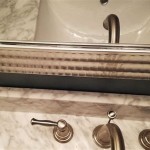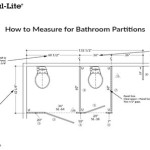Low Depth Bathroom Sinks: A Practical and Stylish Solution
In the realm of bathroom design, the humble bathroom sink plays a pivotal role. It's the focal point of daily routines, serving both functional and aesthetic purposes. While traditional bathroom sinks typically boast a deep basin, a growing trend is emerging: the low depth bathroom sink. These sinks offer a unique blend of practicality and style, catering to a diverse range of design preferences and bathroom layouts.
Low depth bathroom sinks, as the name suggests, feature a shallower basin compared to their conventional counterparts. This subtle yet significant difference can have a profound impact on the overall look and feel of your bathroom, creating a sense of spaciousness and modernity.
Advantages of Low Depth Bathroom Sinks
The rise in popularity of low depth bathroom sinks can be attributed to their numerous advantages, making them a compelling choice for both new construction and bathroom renovations.
1. Enhanced Accessibility
One of the primary benefits of low depth bathroom sinks is their enhanced accessibility. The shallower basin makes it easier for individuals of all ages and abilities to reach and use the sink comfortably. This is particularly advantageous for seniors, individuals with mobility limitations, and children, allowing them to perform their daily hygiene routines with greater ease.
2. Sleek and Modern Aesthetics
Low depth bathroom sinks often boast a sleek and modern aesthetic that complements contemporary bathroom designs. Their minimalist profile and clean lines create a sense of sophistication and visual appeal, elevating the overall style of the space. The shallow basin provides a broader surface area, which can be used to showcase decorative accents, toiletries, or even small potted plants.
3. Increased Countertop Space
Low depth bathroom sinks free up valuable countertop space, providing a more spacious and functional work area. This added space can be utilized for placing toiletries, styling products, or simply creating a clutter-free and organized environment. The increased countertop space also makes it easier to perform tasks like shaving, applying makeup, or brushing teeth.
Types of Low Depth Bathroom Sinks
The world of low depth bathroom sinks offers a wide array of styles and materials to suit individual preferences and bathroom designs. Some popular types include:
1. Vessel Sinks
Vessel sinks typically feature a bowl-like design that sits on top of the countertop, creating a striking visual focal point. Their shallow depth makes them ideal for smaller bathrooms or bathrooms with limited countertop space. Vessel sinks are available in a diverse range of materials, including ceramic, porcelain, glass, stone, and metal, offering a wide selection of styles and aesthetics.
2. Undermount Sinks
Undermount sinks are installed beneath the countertop, creating a seamless and integrated look. Their shallow depth allows for a more spacious countertop while maintaining a sleek and contemporary aesthetic. Undermount sinks are often made of durable materials like stainless steel, porcelain, or composite materials.
3. Semi-Recessed Sinks
Semi-recessed sinks offer a unique blend of functionality and style. As the name suggests, these sinks are partially recessed into the countertop, creating a unique and modern look. Their shallow depth maximizes countertop space while providing a visually appealing statement piece for the bathroom.
Considerations for Choosing a Low Depth Bathroom Sink
While low depth bathroom sinks offer numerous advantages, it's important to consider some factors before making a purchase:
1. Water Usage
The shallower basin of a low depth bathroom sink can affect water usage. Due to the reduced depth, these sinks may require more water to fill and drain. This is especially true for vessel sinks. Consider the water usage patterns in your household and choose a model that balances functionality with water conservation.
2. Splashing
The shallow depth of a low depth bathroom sink can sometimes lead to increased splashing. This can be mitigated by choosing a sink with a wide basin and a gentle slope. Additionally, installing a splash guard or using a faucet with a low-flow aerator can further minimize splashing.
3. Installation
Installing a low depth bathroom sink may require professional assistance, particularly for undermount and semi-recessed models. Consider the complexity of the installation process and ensure it's compatible with your existing countertop and plumbing.
Conclusion
Low depth bathroom sinks offer a practical and stylish solution for modern bathrooms. They combine functionality with contemporary aesthetics, creating a space that is both visually appealing and highly usable. With their enhanced accessibility, sleek designs, and increased countertop space, low depth bathroom sinks are an excellent choice for a variety of bathroom layouts and design preferences.

Narrow Depth Bathroom Vanities Signature Hardware

22 Inch Narrow Depth Console Bath Vanity Custom Options

The Best Shallow Depth Vanities For Your Bathroom Trubuild Construction

Narrow Depth Bathroom Vanities Signature Hardware

Why Do I Need An 18 Inch Deep Bathroom Vanity Anve Kitchen And Bath

Narrow Depth Vanity 15 To 20 In Dept Space Saving

24 Adelina Contemporary Small Slim Narrow White Bathroom Vanity

16 Small Bathroom Vanities 24 Inches Under Kelley Nan

14 Splendid Small Bathroom Sink Ideas Shelfgenie

The Best 19 Small Bathroom Vanities Of 2024
Related Posts







